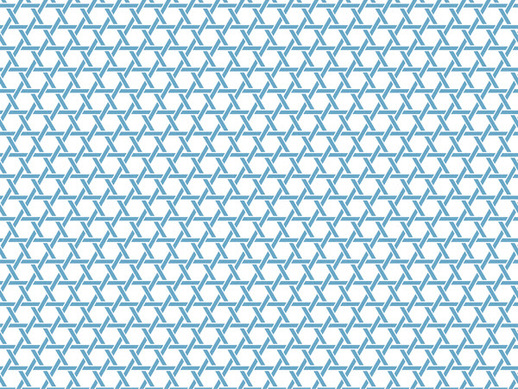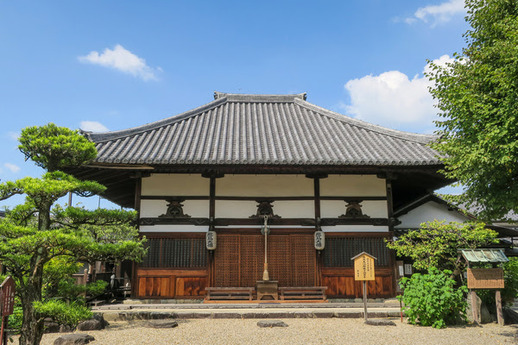2024.10.24
伝検通信(メルマガ)週刊メールマガジン「伝検通信」 第29号
週刊メールマガジン「伝検通信」第29号をお届けします。
今号のトップ記事は、伝統製法で作られるかつお節の話題です。
「クイズで肩慣らし」は前回クイズの答え・解説と、伝統色・文様分野からの出題です。
11月から実施する2級および3級の第1回伝検の受験申し込みを受け付けています。公式テキスト、2級受験者向けオンライン講座の販売もスタートしています。ぜひお申し込みください。
伝検申込サイト https://denken-test.jp/ examination/
目次
・ 伝統製法「手火山式」のかつお節
・ 「クイズで肩慣らし」第29回(伝統色・文様)=「魔よけの文様」
・ 伝検協会だより
伝統製法「手火山式」のかつお節

伝統的な製法「手火山(てびやま)式」でカツオをいぶす熊谷智範社長
=10月3日、宮城県気仙沼市
(時事通信社提供)
生鮮カツオの水揚げ量27年連続日本一を誇る宮城県気仙沼市では、伝統的な製法「手火山(てびやま)式」によるかつお節づくりが行われている。かつお節を最もおいしくする製法の一つと言われているが、機械化が進む中で職人は減り続け、「幻の製法」と呼ばれることも。水産加工会社マルヤマの熊谷智範社長は「長い歴史を持つ手火山式を未来に残したい」と語る。
同社の工場では、地面を2メートルほど掘ってつくった炉から、絶え間なく煙が立ち上がり、その煙が作業場を包み込んでいる。2メートルもの深い穴を掘るのは、火力を強めるためで、「カツオのうまみをより多く引き出せる」(熊谷社長)という。
この炉の上にカツオを並べた木枠のせいろを置き、煙でじっくりといぶす。手火山式の名の通り、手をかざして火加減を確かめながら、煙と熱がカツオに均等に当たるよう調整し、時間をかけて水分を抜いていく。
「手火山式は手間がかかる分、うまみが増す」と熊谷社長。大量生産に向かないため、この製法を行っている会社は現在、気仙沼市内ではマルヤマを含め数社のみだが、熊谷社長は「地元でも愛され続けている気仙沼のかつお節をこれからもつくり続ける」と力を込める。
かつお節づくりは10月中旬以降、天日干しで乾燥させ、その後、冷蔵庫で半年~1年間ほど熟成させる。完成までに時間をかけることでうまみが凝縮されるという。
▼時事ドットコムニュース トレンド動画 伝統製法「手火山式」のかつお節 より
「クイズで肩慣らし」第29回(伝統色・文様)=「魔よけの文様」

六芒星(ろくぼうせい)」の形に見えることから、魔よけの力があるとされる文様
問題:竹かごなどを編んだ編目を意匠化したもので、江戸時代には浴衣などに用いられていた、邪気をはらう魔よけの意味を持つ文様を何というでしょうか。 (答えと解説は次号で)

日本で最初の本格的な仏教寺院
【前回の答えと解説】
問題:飛鳥時代の596年に豪族・蘇我馬子が創建した、 日本で最初の本格的な仏教寺院は何でしょうか。
答え:飛鳥寺(あすかでら)
解説:日本で最初の本格的な仏教寺院として、日本の世界遺産第1号である「法隆寺」を思い浮かべる方も多いかもしれませんが、正解は「飛鳥寺」です。飛鳥寺は596年に建立され、当時は現在の20倍もの面積があり、法隆寺をしのぐ巨大寺院でした。しかし、鎌倉時代に伽藍(がらん)の大半を焼失し、現在は江戸時代に再建された建物が中心となっています。一方、推古天皇と聖徳太子によって607年に建立され、7世紀後半に再建された法隆寺は、現存する世界最古の木造建築として知られます。
伝検協会だより
▼弊会の新たな会員として、一般財団法人「備前市文化芸術振興財団」(岡山県備前市)に加わっていただきました。同財団は2023年4月発足。釉薬(ゆうやく)を使わず、絵付けもしないシンプルさが特徴の備前焼の振興事業などを手掛けています。弊会としても財団との連携を深め、伝統文化・産業の継承、発展に貢献していきます。
▼弊会の正会員である西武ホールディングスなどが10月12日に「ザ・プリンスギャラリー東京紀尾井町」(東京)で開いた工芸イベント「Rethink Kogei」に参加してきました。米人気歌手のレディー・ガガさんが愛用した「ヒールレス・シューズ」を手掛けた現代アーティストの舘鼻則孝さんらによるトークショーなどが行われました。海外でも活躍する舘鼻さんは「日本の工芸文化を世界に発信していきたい」と強調していました。
編集後記
伝検通信第29号をお届けしました。朝晩は涼しいというより、少し寒さを感じるようにもなりました。二十四節気で昨日は「霜降(そうこう)」。文字通り、空気中の水分が霜となって土や植物の葉を白く染める季節です。汁物や鍋がおいしい季節になってきました。トップ記事のかつお節を探しに、協会近くの築地場外市場に行ってみます。
【English version】
DENKEN Tsushin Weekly Newsletter No. 29
We are pleased to present the 29th issue of our weekly e-mail magazine, DENKEN TSUSHIN.
The top article in this issue is about bonito flakes made by traditional methods.
In the “Quiz to familiarize yourself” section, you will find answers and explanations to the previous quiz, as well as questions from the field of traditional colors and patterns.
We are now accepting applications for the first DENKEN test for Level 2 and Level 3, which will be held in November. The official textbooks and online courses for Level 2 examinees are also available for purchase. Please apply now.
DENKEN application website: https://denken-test.jp/ examination/
Table of Contents
Traditional method of making bonito flakes
Quiz to familiarize yourself with the traditional colors and patterns of dried bonito flakes.
DENKEN KYOKAI Newsletter
Katsuobushi made by the traditional method of “Tebiyama-shiki" (hand-rolled bonito flakes)

In Kesennuma City, Miyagi Prefecture, which boasts the largest catch of fresh bonito in Japan for 27 consecutive years, bonito flakes are made using the traditional Tebiyama method. It is said to be one of the most delicious methods of making katsuobushi, but with the increasing mechanization of the industry, the number of craftsmen has been decreasing, and it is sometimes referred to as a “phantom process. Tomonori Kumagai, president of Maruyama, a seafood processing company, says, “We want to preserve the hand-katsuobushi method with its long history for the future.
At the company's factory, a two-meter-deep hole was dug in the ground to create a furnace, from which smoke continuously rises and envelops the work area.
A wooden frame with bonito is placed on top of the furnace and slowly smoked. As the name suggests, the flame is controlled by holding up one's hand to check the heat level, adjusting the heat and smoke so that they are evenly distributed over the bonito, and taking the time to remove the water from the bonito.
President Kumagai says, “The more time and effort it takes, the more umami it tastes. President Kumagai is committed to continuing to produce Kesennuma bonito flakes, which have been loved by the locals.
The dried bonito flakes are dried in the sun from mid-October onward, and then matured in a refrigerator for six months to a year. The process is said to concentrate the umami of the dried bonito by taking the time to complete the process.
From Jiji.com News Trend Video: Katsuobushi made using the traditional “hand-volcano” method
Quiz to familiarize yourself with the Japanese traditional colors and patterns.
~ Questions will be given for each field of the official DENKEN textbook (now on sale) ~.

Question: What is the name of the pattern, which is a design of woven bamboo baskets and was used in yukata (summer kimonos) during the Edo period (1603-1868). (See the next issue for the answer and explanation.)
(Answers and explanations will appear in the next issue.)

Question: What was the first full-fledged Buddhist temple in Japan, founded in 596 during the Asuka period by a powerful family member, Soga Umako?
Answer: Asukadera Temple.
Explanation: Many people may think of Horyu-ji Temple, Japan's first World Heritage Site, as the first full-scale Buddhist temple in Japan, but the correct answer is Asukadera Temple. Asuka-ji Temple was built in 596, and at the time was a huge temple, 20 times larger than Horyu-ji Temple, with an area 20 times larger than today. However, most of the temple buildings were destroyed by fire during the Kamakura period (1185-1333), and today most of the buildings were reconstructed during the Edo period (1603-1868). On the other hand, Horyu-ji Temple, built in 607 by Emperor Suiko and Prince Shotoku and reconstructed in the late 7th century, is known as the oldest surviving wooden structure in the world.
DENKENKYOKAI Newsletter
We are pleased to announce the addition of the Bizen City Foundation for Culture and Arts (Bizen City, Okayama Prefecture) as a new member of our association. The foundation was established in April 2023. The foundation is involved in the promotion of Bizen Pottery, which is characterized by its simplicity and lack of glaze and painting. The Foundation will deepen its cooperation with the Foundation and contribute to the inheritance and development of traditional culture and industry.
On October 12, Seibu Holdings, a regular member of the Foundation, and other companies participated in the “Rethink Kogei” craft event held at The Prince Gallery Tokyo Kioicho in Tokyo. The event included a talk show by Noritaka Tatehana, a contemporary artist who created “heel-less shoes” used by Lady Gaga, a popular American singer. Mr. Tatehana, who is also active overseas, emphasized that he would like to promote Japanese craft culture to the world.
Editor's note
We are pleased to present the 29th issue of DENKEN Tsushin. The mornings and evenings have become a little colder rather than cooler. Yesterday was “frostfall” according to the 24 solar terms. As the name suggests, this is the season when moisture in the air turns into frost and turns the soil and leaves of plants white. It is the season when soups and nabe dishes are delicious. I will go to Tsukiji Outside Market near the association to look for bonito flakes for the top article.
カテゴリー: 伝検通信(メルマガ)





